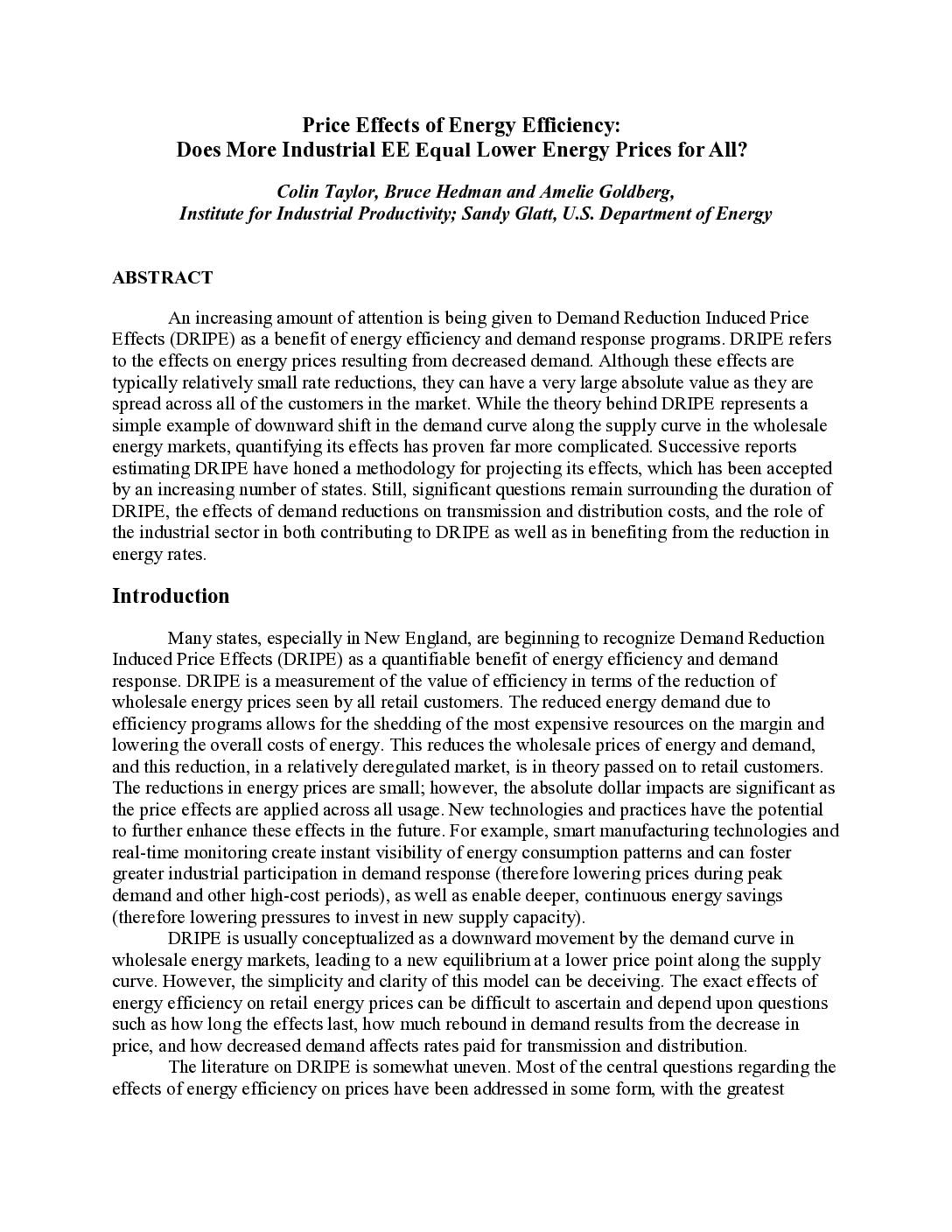An increasing amount of attention is being given to Demand Reduction Induced Price Effects (DRIPE) as a benefit of energy efficiency and demand response programs. DRIPE refers to the effects on energy prices resulting from decreased demand. Although these effects are typically relatively small rate reductions, they can have a very large absolute value as they are spread across all of the customers in the market. While the theory behind DRIPE represents a simple example of downward shift in the demand curve along the supply curve in the wholesale energy markets, quantifying its effects has proven far more complicated. Successive reports estimating DRIPE have honed a methodology for projecting its effects, which has been accepted by an increasing number of states. Still, significant questions remain surrounding the duration of DRIPE, the effects of demand reductions on transmission and distribution costs, and the role of the industrial sector in both contributing to DRIPE as well as in benefiting from the reduction in energy rates.
Link to resource Download sourceShare this

Sectors: Cross cutting, Power sector, Renewables
Country / Region: Northern America, United States
Tags: energy, energy efficiency, responseKnowledge Object: Publication / Report
Published by: IIP
Publishing year: 2015
Author: Colin Taylor, Bruce Hedman, Amelie Goldberg, Sandy Glatt
